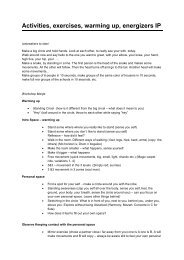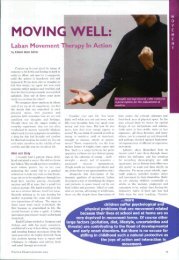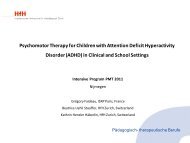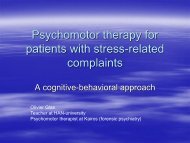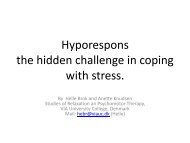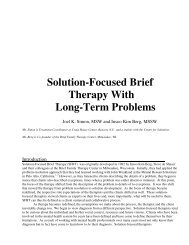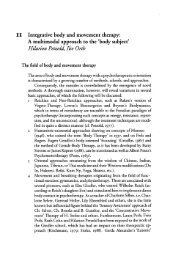Factors and Processes Contributing to Resilience
Factors and Processes Contributing to Resilience
Factors and Processes Contributing to Resilience
You also want an ePaper? Increase the reach of your titles
YUMPU automatically turns print PDFs into web optimized ePapers that Google loves.
<strong>Fac<strong>to</strong>rs</strong> <strong>and</strong> <strong>Processes</strong> ContributJng <strong>to</strong> <strong>Resilience</strong> ZlS<br />
tions strategies <strong>and</strong> advanced statistical methodologies capable of analyzing<br />
transactional data.<br />
The <strong>Resilience</strong> Framework is discussed <strong>to</strong> organized the findings of<br />
many cross-sectional <strong>and</strong> longitudinal resilience studies. This theoretical<br />
framework includes six major predic<strong>to</strong>rs of resilience: initiating stressors,<br />
environmental risk <strong>and</strong> proteelive mechanisms, personpenvironmental<br />
transactional processes, internal individual resiliency fac<strong>to</strong>rs (spiritual, cognitive,<br />
behavioral, emotional, <strong>and</strong> physical), resiliency processes, <strong>and</strong> the<br />
positive outcome. The results of this review suggest that there are many<br />
opportunities or possible targets for increasing resilience in a plannful<br />
manner in designing more supportive environments for children living in<br />
at-risk families.<br />
In order <strong>to</strong> increase drug prevention effectiveness with high-risk youth,<br />
selective <strong>and</strong> indicated prevention interventions, as recently defined by the<br />
Institute of Medicine (Mrazek & Haggerty, 1994), should be designed with<br />
a special focus on promoting resilience. The prevention field is not far from<br />
this goal. By <strong>and</strong> large prevention programs currently focus on increasing<br />
proteelive processes <strong>and</strong> fac<strong>to</strong>rs. They use risk fac<strong>to</strong>r assessments primarily<br />
<strong>to</strong> determine high-risk status only. While prevention interventionsoften<br />
focus on increasing proteelive <strong>and</strong> resilience processes, the evaluations<br />
often primarily assess reductions in risk fac<strong>to</strong>rs. While increasing protective<br />
fac<strong>to</strong>rs <strong>and</strong> resilience theoretically should reduce risk fac<strong>to</strong>rs, the<br />
degree of change in resilience <strong>and</strong> proteelive processes should also be<br />
measured. Empirically tested etiological models including both risk <strong>and</strong><br />
protective/resilience fac<strong>to</strong>rs <strong>and</strong> processes should be developed through<br />
prevention studies. Such multivariate studies should increase the field's<br />
information about proteelive <strong>and</strong> resilience building processes <strong>and</strong> hence,<br />
better inform prevention program methodology on ways <strong>to</strong> increase effectiveness<br />
with highprisk youth.<br />
References<br />
Abelson, W. 0., Zigler, E., & DeBlasi, C. L. (l974). Effects of a four-year follow through<br />
program on economicaHy disadvantaged children.Joumal of Educational Psychology, 66.<br />
756- 771 .<br />
Anthony, E. J. (1987). Risk, vulnerability <strong>and</strong> resilience: An overview. ln E. J. Anthony & B.<br />
Cohler (Eds.), The in vulnerable child (pp. 3-48). New York: The Guilrord Press.<br />
Baldwin, A. L., Baldwin, C. P., Kasser, T., Zax, M., Sameroff, A., & Seifer, R. {1993). Contextual<br />
risk <strong>and</strong> resiliency during late adolescence. Development <strong>and</strong> Psychopathology, 5,<br />
741 - 761.<br />
B<strong>and</strong>ura, A. ( 1977). Self4 efficacy: Toward a unifying lheory of behavior change. Psychological<br />
Review, 84, 191-215.



